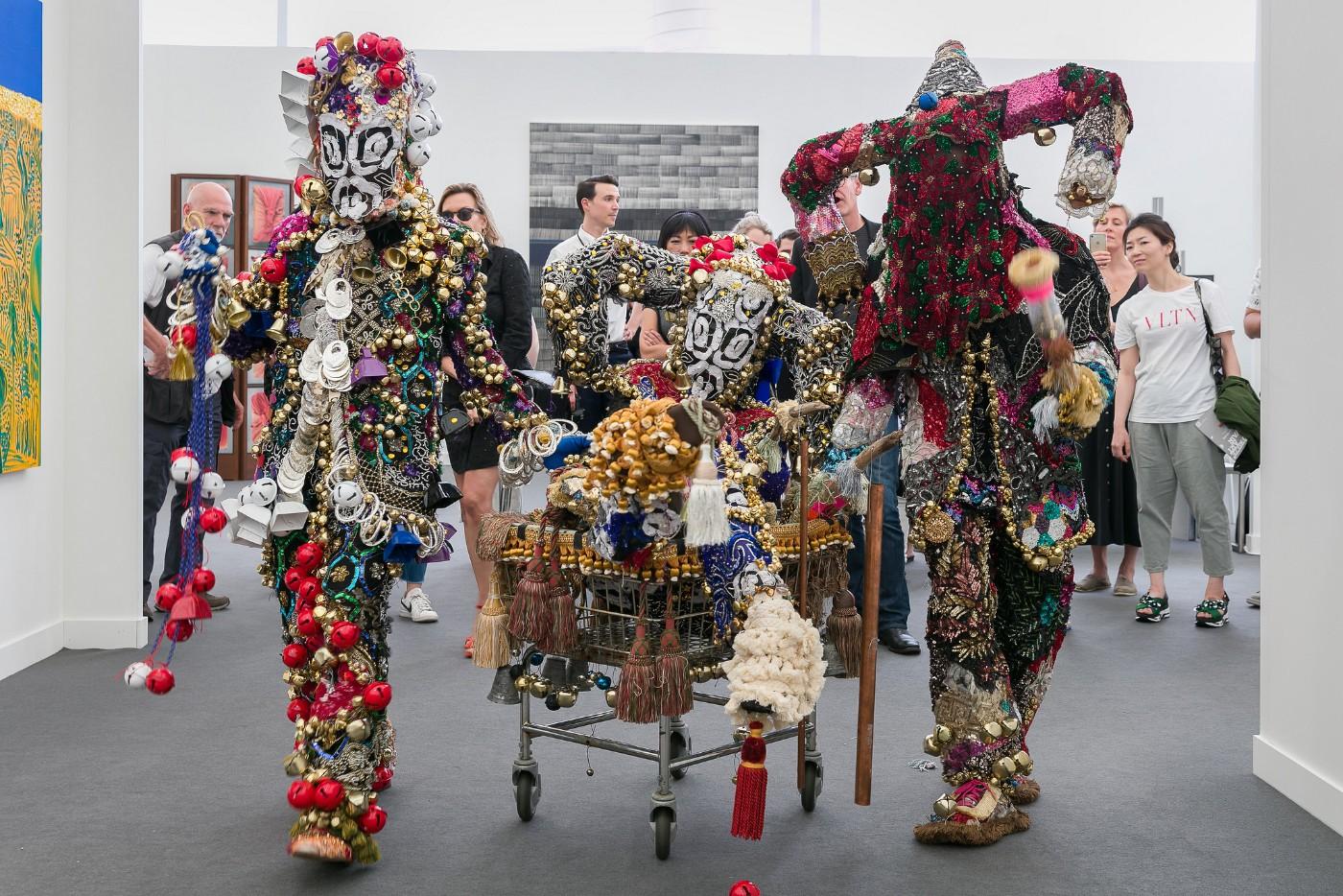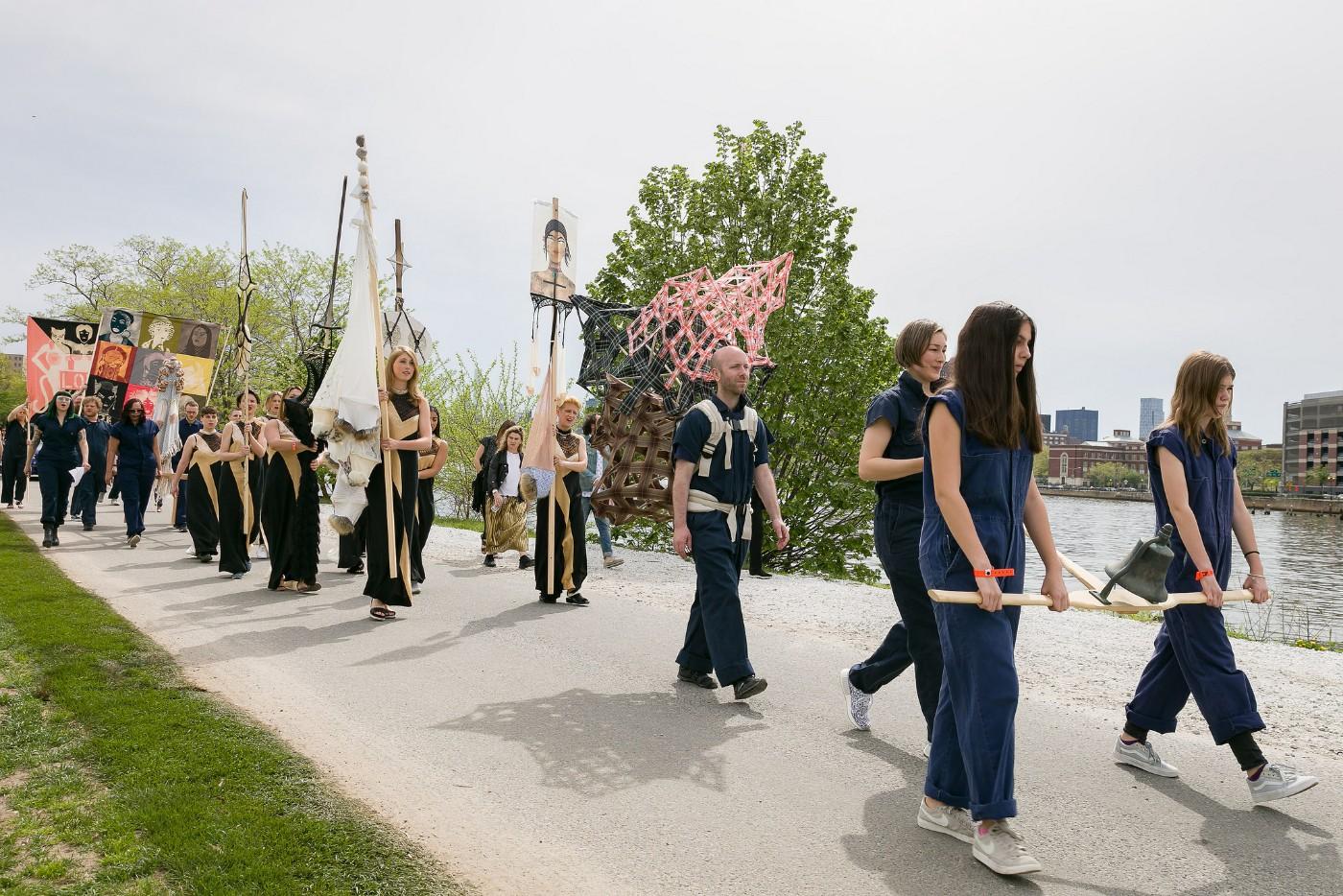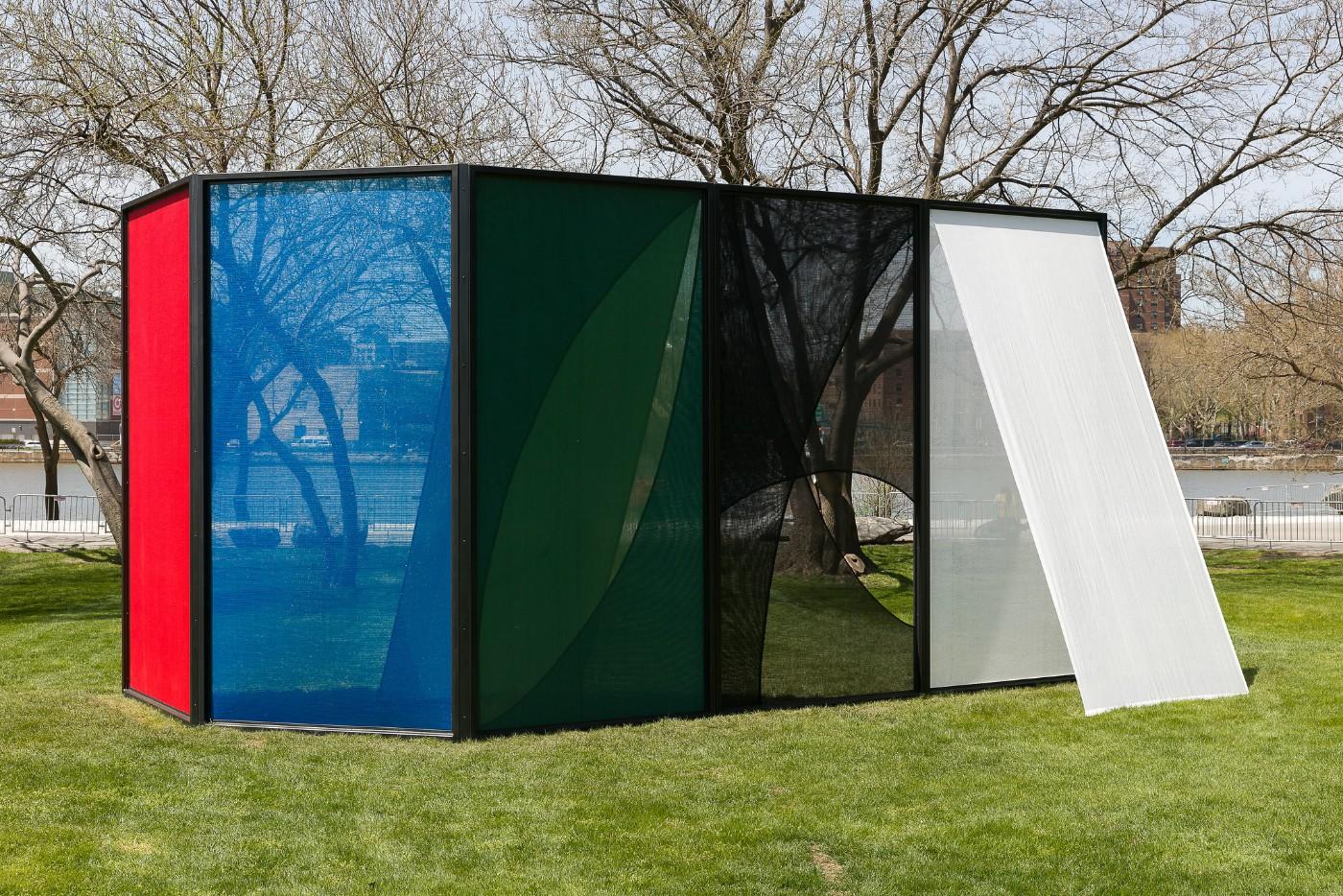Another strong component in this chock full, if nearly overwhelming fair, was the first ever “Frieze Artist Award.” Kapwani Kiwanga won the open call prize, which was also curated by Edwards. Kiwanga’s commission, "Shady," was a brightly colored, interactive site-specific sculpture. Though Frieze’s size and breath at times seem unfocused or sprawling, when the fair adds platforms it does so judiciously, as evidenced by Kiwanga’s work and Edward’s curatorial insight. These initiatives demonstrate Frieze’s greatest strength—its role in artistic and cultural production, alongside traditional art fair gallery display.

Raul de Nieves with Erik Zajaceskowski, Company Gallery, Live program, Frieze New York 2018
The seventh annual Frieze New York Art Fair, which ran May 4-6, featured more than 190 galleries, curated awards and special sections, a robust talks schedule, and vibrant performance art. The fair, just one in Frieze’s multinational series that includes both a masters and contemporary edition in London and a new iteration in Los Angeles, was housed in a redesigned, labyrinthian temporary structure that stretched across New York City’s Randall’s Island Park. Frieze’s program presented a breadth of curatorial concepts, with galleries organizing solo artist features, group exhibitions, and thematic booths. The fair also highlighted emerging galleries and 20th century art history vis-a-vis special sections.
Frieze added several new platforms this year, including “Live,” a series of activations, performances, and time-based works, curated by Adrienne Edwards of the Whitney. Highlights here included luminary artist Raúl de Nieves in collaboration with Erik Zajaceskowski processing through the fair in de Nieves’ signature dazzling and detailed costumes, which doubled as musical instruments. De Nieves and Zajaceskowski’s work, "THANK YOU/THANK YOU," was presented by Company Gallery. Laura Schnitger's "Suffragette City," for Anton Kern Gallery, was also a highlight. Schnitger led a band of compatriots through the crowded fair aisles. They carried Schnitger-designed banners and sculptural objects, channeling both change and mythos in a ritual worthy of the #metoo moment and the urgency of contemporary feminism.

Lara Schnitger, "SUFFRAGETTE CITY," Anton Kern, Live program, Frieze New York 2018

Kapwani Kiwanga, Frieze Artist Award supported by Luma Foundation, Frieze New York 2018




























